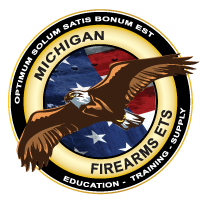Course Description: The NRA’s Basic Personal Protection Outside the Home Course introduces students to the knowledge, skills, and attitude involved in safely, responsibly, and effectively employing a concealed pistol for self-defense. This is an intensive course, as the student must learn and practice many diverse shooting skills in order to respond quickly and appropriately to the broad range of threats that he or she may encounter outside the home. Similarly, the student must also learn and understand the unique safety and legal issues that apply when a concealed pistol is carried in public. This course covers the legal ramifications of concealed carry, including who can legally carry a pistol, when concealed carry is and is not permitted, the legal and ethical ramifications when responding to a life threatening encounter using a concealed pistol, and the legal, moral, emotional, and social aftermath of the use of deadly force outside the home.
- NRA Personal Protection In The Home Certificate
- Michigan Concealed Pistol License (MCPL)
- Successful Completion of the Pre-Qualification conducted by a Michigan Firearms’ Instructor
Provided Text: Basics of Personal Protection Outside the Home Handbook
Price: $159
As a result of this training, the student should be able to explain or do the following with regard to carrying and using a pistol for personal protection outside the home:
- Explain importance of carrying and using a pistol responsibly and ethically
- Explain how the three fundamental NRA rules for safe gun handling apply
- Explain how the NRA rules for using and storing a gun apply when carrying concealed pistols
- Special safety considerations that must be observed when carrying or using a concealed pistol outside the home
- The various techniques for storing a pistol outside the home
- The four levels of awareness and how they apply to concealed carry
- The importance of mental preparation and developing the proper mindset for carrying and using a pistol for personal protection and facing a life-threatening encounter outside the home
- Techniques for avoiding life-threatening confrontations outside the home
- The psychological and physiological changes that may occur during an attack
- The differences between having a firearm for personal protection in the home and carrying a pistol for personal protection outside the home
- Techniques for responding and controlling a violent encounter
- The emotional, legal, and social aftermath of a defensive shooting
- Explain the general rights and restrictions under laws permitting the carrying of concealed pistols for self defense
- State key legal provisions and restrictions pertaining to the use of deadly force
- Potential criminal and civil legal actions that may be taken subsequent a violent encounter
- Identify various concealed carry modes – benefits and limitations of each
- Explain the basic principles of pistol concealment
- Demonstrate safely presenting and re-holstering a concealed pistol
- Present a concealed pistol and shoot targets in the center of exposed mass
- Conduct speed reloading, clear stoppages, and shoot center of mass
- Identify organizations, associations, clubs, and businesses that may help hone, enhance, and expand personal protection skills
- Explain methods and precautions for dry-fire practice, including drawing from the holster
- Successfully complete the NRA Basics of Personal Protection Outside The Home Course written examination
- You will need to provide the pistol you plan to use for personal protection
- 150 rounds of ammunition is required for this course
- A Strong Side Outside The Waist Band Holster or a Concealed Carry Purse with a cross body strap
- Hearing and eye protection are required on the range at all times
- This course, level II, is required to advance to Concealed Carry Level III
